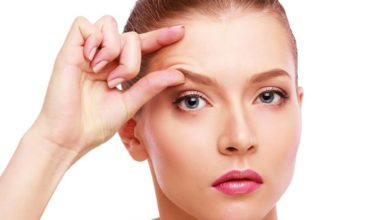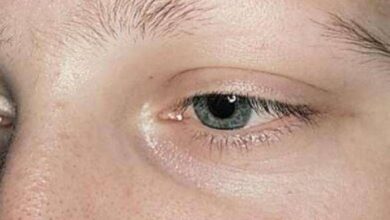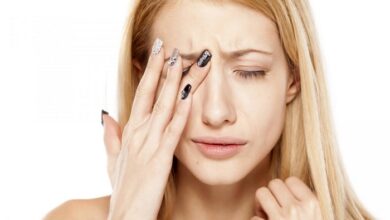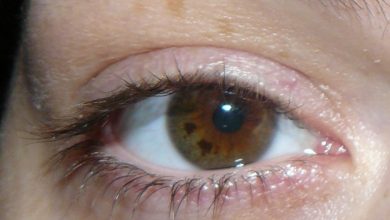Understanding the Meaning Behind Furrowed Eyebrows: A Comprehensive Guide

In the realm of nonverbal communication, facial expressions play a significant role in conveying emotions and thoughts. One such expression that holds intriguing meaning is furrowed eyebrows. Whether you’ve noticed it in yourself or others, those creased lines above the eyes can reveal a multitude of emotions, from concern and confusion to anger and concentration. In this comprehensive guide, we will delve into the fascinating world of furrowed eyebrows, exploring their significance, potential causes, and how to interpret them in various contexts.
Furrowed Eyebrows: Unveiling the Expression
Furrowed Eyebrows Definition
Furrowed eyebrows refer to the formation of vertical lines or wrinkles between the eyebrows, resulting from the contraction of the muscles in the forehead. This expression manifests as a downward pull or squeeze of the eyebrows, creating a distinct appearance that can be easily recognized.
Emotional Significance
Furrowed eyebrows often serve as a visual cue for specific emotions and mental states. While individual interpretations may vary, some common associations include:
- Concentration: When engaged in a mentally demanding task or deep thinking, furrowed eyebrows may indicate intense focus and concentration.
- Confusion: In situations where a person is perplexed or struggling to understand something, furrowing of the eyebrows can be a sign of confusion.
- Concern or Worry: Furrowed eyebrows can signify concern, worry, or a sense of distress, particularly when combined with other facial expressions or body language cues.
- Anger or Frustration: Strong negative emotions such as anger or frustration often result in furrowed eyebrows, accompanied by tightened facial muscles.
Causes and Triggers
Furrowed eyebrows can have various causes and triggers, including:
- Emotional States: Emotional experiences, such as stress, anxiety, or fear, can lead to furrowing of the eyebrows as a physical response.
- Mental Effort: Engaging in tasks that require significant mental effort, problem-solving, or concentration can naturally lead to furrowed eyebrows.
- Vision Impairment: Individuals with vision problems, such as nearsightedness, might subconsciously furrow their eyebrows while trying to focus or see clearly.
- Genetics and Aging: Some people have naturally deeper lines between their eyebrows, which can be influenced by genetic factors or become more pronounced with age.

Interpreting Furrowed Eyebrows in Context
Social Interactions
When interpreting furrowed eyebrows in social interactions, it is crucial to consider the overall context and accompanying cues. Here are some scenarios where furrowed eyebrows may provide insights:
- Leadership and Decision-Making: Leaders or individuals in positions of authority may furrow their eyebrows to project a sense of seriousness, critical thinking, and determination.
- Problem-Solving and Analysis: Furrowed eyebrows can indicate active problem-solving or analytical thinking, showcasing a person’s dedication to finding solutions and attention to detail.
- Perceived Competence: In certain professions, furrowed eyebrows can contribute to a perception of competence and expertise. The seriousness and intensity conveyed by furrowed eyebrows may be associated with a diligent and focused approach to work. This perception can be particularly relevant in fields such as law, medicine, or research, where attention to detail and critical thinking are highly valued.
Furrowed Eyebrows: Potential Health and Wellness Considerations
While furrowed eyebrows can often be attributed to emotional or situational factors, it’s essential to be mindful of potential underlying health and wellness considerations:
- Chronic Stress: Prolonged periods of stress can contribute to habitual furrowing of the eyebrows. It’s crucial to address and manage stress effectively to reduce its impact on overall well-being.
- Tension Headaches: Furrowed eyebrows can be associated with tension headaches, a common type of headache characterized by muscle tension and pain in the head and neck region.
- Eye Strain: Intense focus or prolonged screen time can strain the eyes, leading to furrowed eyebrows. Taking regular breaks and practicing eye exercises can help alleviate this strain.
- Facial Muscular Tension: Individuals with chronically tight facial muscles may experience more frequent furrowing of the eyebrows. Relaxation techniques, such as facial massages or meditation, can help reduce muscle tension.
- Neurological Conditions: In some cases, persistent furrowed eyebrows may be a symptom of certain neurological conditions, such as Parkinson’s disease or dystonia. If accompanied by other concerning symptoms, it’s advisable to consult a healthcare professional.

Understanding and Managing Furrowed Eyebrows
While furrowed eyebrows can have multiple interpretations and causes, there are several strategies to understand and manage this expression effectively:
• Self-Awareness: Pay attention to your own facial expressions and body language to gain insights into the emotions or mental states associated with furrowed eyebrows. Mindfulness practices can help enhance self-awareness.
• Contextual Analysis: Consider the broader context, including the situation, verbal cues, and other nonverbal expressions, when interpreting furrowed eyebrows in others. Avoid jumping to conclusions and seek clarification if needed.
• Empathy and Communication: If you notice someone with furrowed eyebrows, approach the situation with empathy and open communication. Ask if they would like to talk or if there’s anything you can do to support them.
• Stress Management: Practice stress-reducing techniques such as regular exercise, deep breathing exercises, meditation, or engaging in hobbies to help minimize the occurrence of furrowed eyebrows caused by stress.
• Eye Care: Take care of your eyes by ensuring proper lighting, maintaining an appropriate distance from screens, and scheduling regular eye exams. Corrective lenses or eye exercises may be beneficial if vision problems contribute to furrowed eyebrows.
• Seeking Professional Help: If furrowed eyebrows become a persistent concern or are accompanied by other symptoms that affect daily life, it’s advisable to consult with a healthcare professional or therapist who specializes in mental health or facial expressions.
Conclusion
Furrowed eyebrows serve as a fascinating nonverbal expression with diverse interpretations and meanings. By understanding the emotional significance, potential causes, and contextual considerations, we can develop a deeper understanding of this facial expression and improve our communication and interpersonal skills. Whether in social interactions, professional settings, or personal well-being, being attentive to furrowed eyebrows can enrich our understanding of others and ourselves. Remember, nonverbal communication is an intricate language that extends beyond words, and furrowed eyebrows are just one piece of the larger puzzle.








